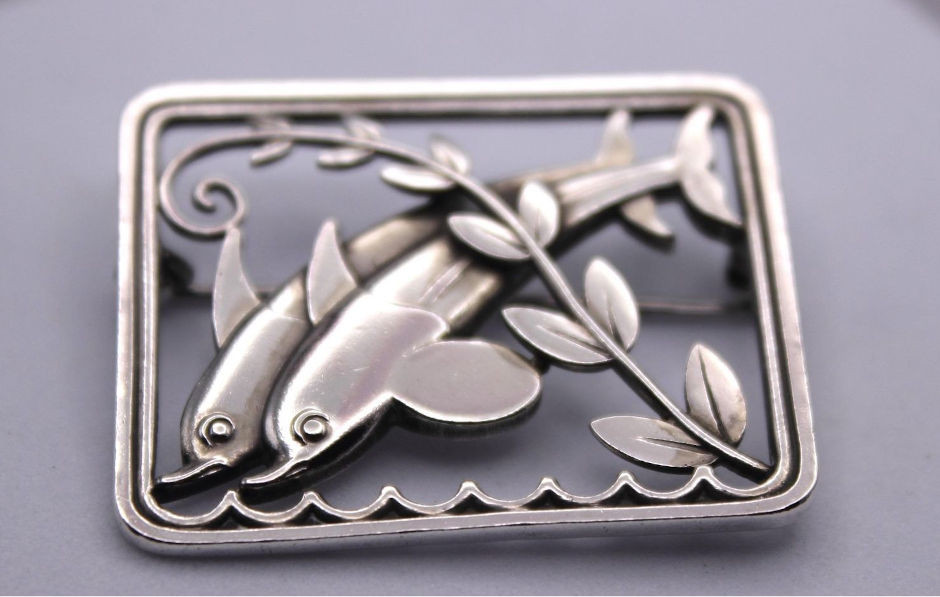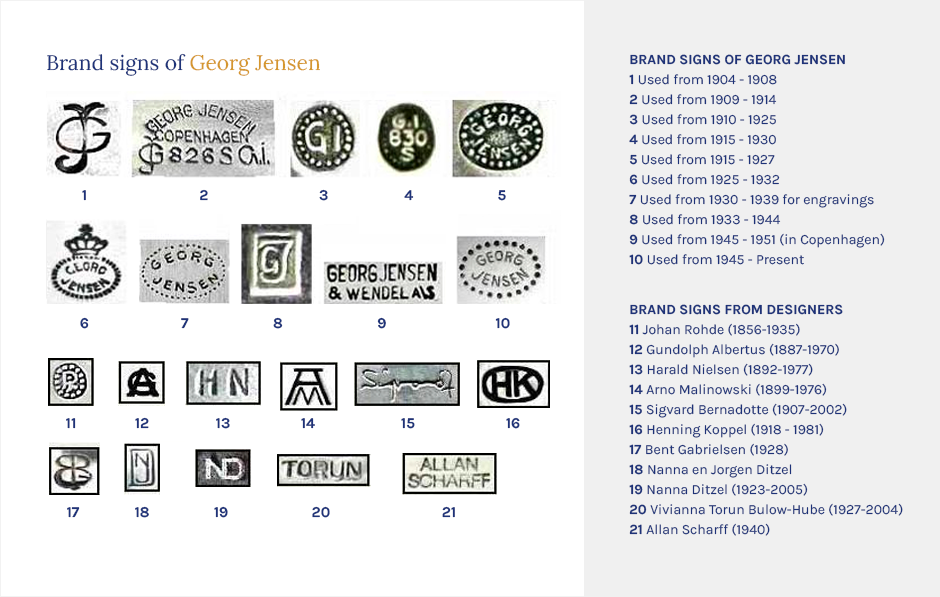
Today, the name Georg Jensen is synonymous with the finest Danish silverware, from jewellery including brooches, bracelets and rings, to vases and tableware. We examine the man behind the brand and discuss features of his work that collectors should know.
Who was Georg Jensen?
The seventh of eight children of a knife grinder and a housemaid, Georg Jensen was born in Denmark in August 1866. With little formal schooling and having worked alongside his father in a factory, Georg was 14 when the family moved from rural Radvaad to Copenhagen, and he began an apprenticeship to a goldsmith.
When Jensen’s original goal to become a commercial sculptor did not come to fruition, and following the tragic early death of his first wife, Jensen eventually opened his own smithy in spring 1904. By the autumn of the same year his first exhibition as an independent silversmith was a huge success and his workshop began to grow.
After a lifetime of awards and accolades (he was awarded the Grand Prix at the 1925 Paris World’s Fair and was the only silversmith outside of the UK to exhibit at the Goldsmith’s Hall in 1932), Jensen died at the age of 69, in 1935.
Georg Jensen’s inspiration
Hugely influenced by the countryside where he spent his formative years, surrounded by forests and lakes, Jensen drew his main inspiration from nature, and symbols of the natural world, including blossom, leaves and fruit, became a common theme throughout his designs. Jensen initially concentrated on jewellery design as production costs were much lower than for flatware or hollowware, and having always encompassed collaboration with fellow artists, we can see that Jensen was also influenced by these alliances. Indeed, it was as a result of working alongside Christian Mohl Hansen, a Danish artist, that the famous dove brooch was created, featuring the motif that can still be seen today. Following his success with jewellery, Jensen was encouraged to design hollowware, greatly influenced by the Arts and Craft Movement in England and the French Art Nouveau which rejected mass production, believing that we should surround ourselves with beauty in our everyday lives.
What to be aware of when collecting Georg Jensen
As well as Georg Jensen jewellery for men and women, collectors can enjoy a range of hollowware which includes goblets and teapots amongst others, flatware, as well as small luxury items such as letter openers and notepad covers. While many collectors focus on particular designers (Jensen himself, Rohde, Nielsen and Torun), others choose to collect specific patterns – Blossom, Acorn, Grape, Pyramid to name but four.
How to identify vintage Georg Jensen
Genuine pieces will feature the silver hallmark, as well as a brand mark for Jensen himself or the designer. Jensen’s brand mark incorporates his monogram or name in various forms depending on the age of the piece (see below), while designers he collaborated with had their own brand marks which were included on the piece.

Vintage Georg Jensen at Hemswell Antique Centres
Georg Jensen is highly collectable and the market continues to grow steadily, with some pieces being extremely valuable. The scope of designs and pieces produced by Georg Jensen appeals to a wide range of tastes and at Hemswell we are fortunate to house several dealers whose pieces will attract every aesthetic. Whether your interest lies with vintage Georg Jensen jewellery or flatware, our selection of pieces has something for everyone, with prices starting within the reach of even the novice collector.